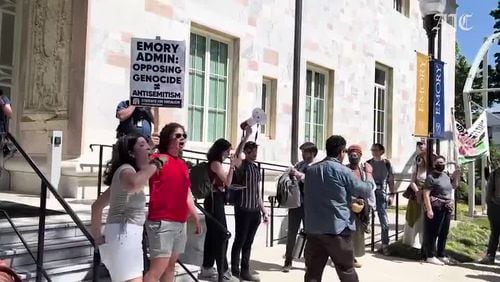It’s the mystery of the missing workers. The number of people in Georgia’s labor force has fallen by 73,800 people in the past year, according to federal data, and no one is quite sure: Are those who vanished just invisible to the data or are they simply gone?
Gone, argued demographer Doug Bachtel of the University of Georgia. “There is a huge traveling workforce that follows the jobs.”
Georgia has been among the fastest-growing states, and 60 percent of the growth has been from new people moving in, Bachtel said. Many took jobs in construction, landscaping and various service jobs.
“As the economy slowed down, and jobs in some of those growth sectors dried up, people either looked in other fields or they have boogalooed out of here,” he said.
But others suggest the decline is due at least as much to people who’ve dropped off the workforce grid by going back to school or making some other life change.
Whatever the explanation, Georgia’s workforce in the past 12 months has shrunk proportionally more than all but five other states. In sheer numbers, it is the second-biggest loss in the nation.
The decline started in December, and since then about 108,891 workers have left the work force, according to the Bureau of Labor Statistics. The net reduction for the past 12 months is 73,800 because of growth until December.
Economists say recessions typically discourage many people from looking for work. That is one reason, they say, that the jobless rate often rises as the economy improves -- optimism draws people back to the job search.
To calculate the unemployment rate, officials estimate how many people are out of work and are looking for a job. If you are not looking for a job or you have gone back to school, you are not counted as part of the labor force.
The official unemployment rate in Georgia last month was 10.3 percent, but that is calculated with the smaller labor force.
If the labor force was the same size as in July of last year, the jobless rate would be 11.7 percent. If the labor force were the same size as when it peaked in December, the rate would be 12.4 percent.
If the decline indicates how bad the economy has been in Georgia, it also removes tens of thousands of competitors for jobs.
A prolonged exodus could threaten the state’s reputation as a business destination, as well as deprive the state of talent and tax revenue.
But Charles W. McMillion, chief economist of MBG Information Services, said the numbers are driven by a mix of factors.
“Many of these dropouts from the labor force are discouraged workers but others have gone back to school, are staying home to take care of children or aged parents, have taken early retirement. Many others have moved in hope of finding work or at least to areas with a lower cost of living.”
Georgia’s workforce last declined during the 1990-91 recession, and the dip was less than 1 percent. This time it’s more than twice as much.
The worst proportional drop in the past 12 months was that of Alabama, whose workforce has shrunk by 2.5 percent. Indiana lost the most workers: 75,700 people.
Only North Dakota and Washington, D.C., added jobs over that time. But the labor force of 24 states grew. Leading the pack was Texas, which added 309,100 workers -- 2.6 percent growth. Fewer people are moving in or out of Georgia these days because of the housing crunch. But more still appear to be moving in than out, according to Jennifer Bonham, Mayflower Transit spokeswoman. Yet the gap has narrowed: So far this year, 55 percent of the moves were into Georgia, compared to 58 percent three years ago. United Van Lines says 53 percent of moves are into the state, also down a few points.
Higher enrollment at colleges and technical schools is a sign that many unemployed are retooling themselves in the hopes of improving their chances or waiting out the hard times, said Michael Thurmond, state labor commissioner.
He doesn’t think the state is losing large numbers of workers, partly because jobseekers still face such stiff odds.
“You can see it in the eyes and demeanor of the people coming into our career centers.”
About the Author






